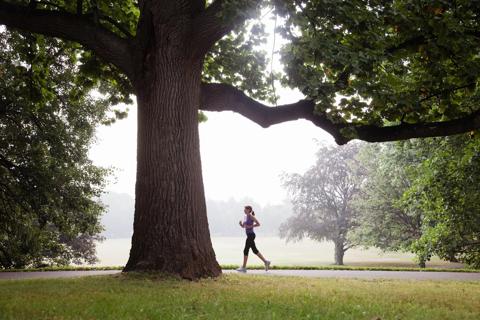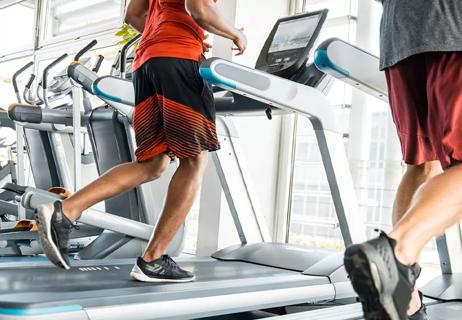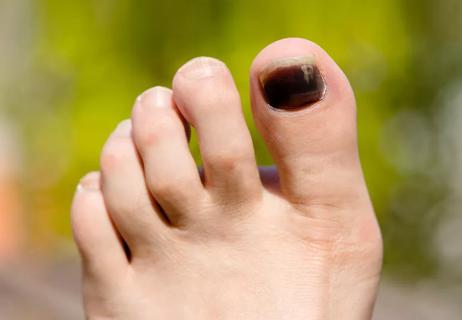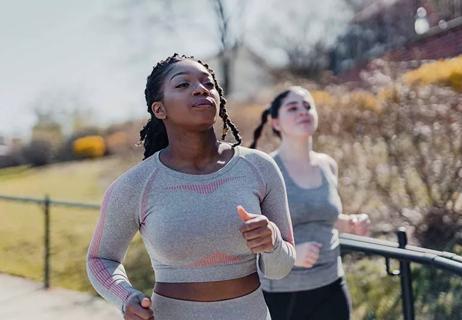Starting something new is exciting, especially when it comes to running. It’s thrilling to run your first mile or cross the finish line of your first race. For many runners, the more you run the more you want to become better at it. And when we think about becoming a better runner, it usually includes becoming faster.
Advertisement
Cleveland Clinic is a non-profit academic medical center. Advertising on our site helps support our mission. We do not endorse non-Cleveland Clinic products or services. Policy
Exercise physiologist Katie Lawton gives us the how-to when it comes to faster running.
Eyes on the prize
Whether you’re training for your first 5K, trying to improve your mile time, want to run a faster marathon or just looking to become a better-rounded athlete – your goal will help determine your training approach.
“If you’re trying to run a faster mile, start by timing yourself so you know where you’re starting off,” says Lawton. “If you want to run a quicker half marathon, calculate how fast you’ll need to run to make the time goal.”
Once you have a tangible, realistic goal, you can begin to tailor a program specifically for it. But don’t panic if you don’t think you’re qualified to create a running plan. It doesn’t have to be rocket science. Hiring a coach can help, but oftentimes just tweaking your training can have a big impact on your athletic ability.
Once you’ve identified your goal and where your current fitness level is, you can start to piece together and incorporate a few of the training strategies mentioned below.
What to do to run faster
- Strength train. A love for endurance can make it hard to hit the weights, but runners interested in getting faster should understand the important relationship between muscle strength and running. The stronger your legs are, the more power they can generate, which can translate into faster running. A strong upper body and core are also helpful in maintaining proper form and reducing fatigue. If you don’t want to pick up weights, even bodyweight movements like pushups, squats and lunges can improve your running. Lawton also recommends adding in HIIT workouts, which activate your fast-twitch muscle fibers, aka your quickness.
- Add in some speed work. In order to become a faster runner, you have to, well, run fast. This sounds obvious, but it’s an important part of the equation. Interval training, tempo runs and fartleks (yes, that’s a real thing) all incorporate varying levels of effort and speed. Interval training includes a maximum effort period followed by a recovery period. For instance, sprinting for 30 seconds and jogging for 60 seconds and repeating this sequence eight times. A tempo run (also known as a threshold run), is running at a pace that is just beyond your comfort level. You can hear your breathing, but you’re not gasping for air. And then there’s a funny-sounding workout called a fartlek (Swedish for “speed play”), in which you alternate between a quicker, harder pace and an easy pace. The key with fartleks is that the workout is unstructured. Pick out a random target as a finish line (like a tree or light pole) and run hard towards it. Keep alternating and doing this for the duration of your run. The challenging part is that it’s supposed to be unpredictable to keep you on your toes.
- Incorporate long(er) runs. Speed is built on a solid foundation of endurance. For this reason, long runs are one of the most effective strategies for getting faster. But remember, the term “long run” is relative to the runner. A long run for someone training for a 10K is going to be much different than a long run for someone training for a marathon. The distance of your long run should be determined by your goal. For someone training for a 5K, 4 miles might be long. For another runner, anything over 20 miles is long. You should aim to do one long run a week. Besides helping to improve endurance and speed, this staple workout can also boost your mental toughness and build resiliency.
- Don’t do too much too soon. When you’ve set a goal for yourself it can be hard not to fly out the gate, horns blaring with motivation. Some runners can start to see results in a few weeks, while other runners can take up to 16 weeks before their pace finally starts to budge. For this reason, don’t build weekly mileage too quickly and don’t throw yourself into hard speed workouts with no experience. The general rule of thumb is to increase your weekly mileage by about 10% each week. And with speed work, try incorporating one to three sessions a week into your schedule when first starting out so that your body can adapt. Keep these guidelines in mind to help prevent injury.
- Perfect your form. A gait analysis is one of the simplest things you can do when it comes to running faster and more efficiently. A gait analysis is a simple running test usually performed by a physical therapist or exercise physiologist. Someone will look at your running form and offer modifications or changes to help you run better and decrease your risk of injury. Maybe you didn’t realize you balled your fists when you ran and had no idea the amount of energy you were spending holding your hands like that. Or maybe your arm swing is too wide or your foot is landing slightly in front of your hip. Minor tweaks in your form can make a big difference in injury prevention, efficiency and quickness.
- Recover like a boss. It’s important to be mindful about scheduling your workouts to make sure you’re not putting hard runs back-to-back with little or no recovery time in-between. Rest days help with the reproduction of the microscopic muscle tears that happen when you work out or run hard. A rest day or easy day allows your body to recover from the breakdown and helps you adapt to your training volume. It also aids your body in regenerating and storing fuel for your next workout. Another component of rest and recovery means focusing on sleep and making it a priority. Research shows that even a little bit of sleep loss can hinder your athletic performance.
- Be persistent. As the saying goes: Rome wasn’t built in a day. Despite good intentions, many runners start out motivated and disciplined but soon lose steam when they don’t see overnight results in their pace or abilities. “Getting faster has a lot to do with your goal, but even more to do with how hard you’re willing to work for it,” says Lawton. It’s important to remember that getting faster takes time. If you put in the work, you should eventually see the results, but it won’t be instant. Look for online running forums, groups or running clubs to help keep you motivated as you work towards your running goal.











